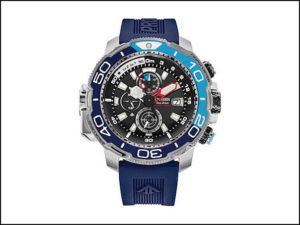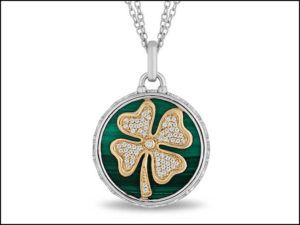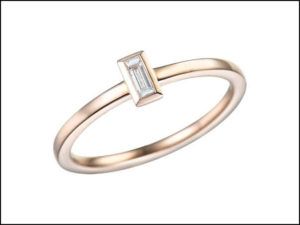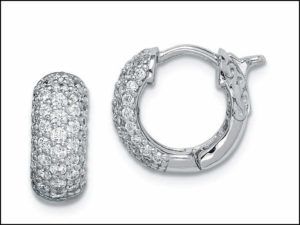Appealing to iGen
The jewelry sector is going through a big shift from offline to online and omni-channel retailing.
The pandemic has changed the face of the jewelry industry, and a new era is beginning, which is more customer-centric and user-friendly. The jewelry sector is going through a big shift from offline to online and omni-channel retailing. Those responding to this change play a big role in directing the future of the jewelry business, says The Plumb Club Industry & Market Insights 2021, developed with luxury trend-forecaster The Futurist, Paola DeLuca, and the quantitative statistical analysis survey firm, Qualtrics.
As digital natives, Gen Z (aka iGen) uses ecommerce, personalized online shopping and on-demand services identifies TPC research. Despite being inundated with digital content, Gen Z still prefers to shop in store versus online, as they don’t like to wait for delivery. But they crave a store that can keep up with technology more than anything.
 Website No. 1 Influencer
Website No. 1 Influencer
In a survey conducted for TPC Industry & Market Insights 2021 of 1,000 U.S. jewelry consumers aged 25-60, a third of respondents rate a retailer’s website as the No. 1 influencer of a jewelry purchase. The influence of “family and friends” came in second at 30%, and social media advertising ranked third at 14%.
Jeffery Cohen, president of Citizen Watches America underscores the importance of a jeweler’s website to be its digital flagship store, with product level content that educates and informs, as most consumers do their initial research online, even if they end up buying in store. According to TPC consumer research, 47% do just that. In fact, 79% of consumers surveyed say they research jewelry products online, and prefer to do so on mobile devices (39%) and laptops (34%).
Lean on brands for high-quality product and lifestyle photography, videos, and brand storytelling to create a more engaging shopping experience, encourages Derek Kristopher, associate director of marketing for SDC Designs. “It’s proven that sites with video get higher engagement than those without.”
Ji Ji Lee, Marketing Director for Jewelmark suggests video formats like Instagram Reels and Stories, and video ads that are interactive and shoppable, as well as augmented reality applications that have proven to be more engaging than static images online.

A majority of respondents to TPC’s consumer survey (85%) say that they are active on social media, with Facebook (93%) and Instagram (73%) most popular, and 59% purchasing through these platforms. The preferred social media platforms for Gen Z are Instagram, TikTok, Snapchat, Pinterest, and Twitch.
As more people moved online, Cohen says he saw the importance of investing in online customer service tools to assist consumers when there was no person to guide them on the path to purchase. The watch company initiated its “Citizen First” philosophy two years ago, empowering consumers wherever they are engaging with the brand. The aim is to keep things easy and seamless for customers, creating awareness and demand no matter where they’re shopping.
Vendor Resources
Since COVID, many manufacturers have been working hard to provide jewelers with digital resources, including free custom design platforms, ecommerce sites, and virtual try-on applications to engage and connect with jewelry consumers.
Novell Global, for example, launched this year a full online resource center for its retail partners, shares Harry Fiorentinos, director of sales for Novell, a subsidiary of Continental. NovellUniversity.com features educational and entertaining podcasts, a jewelry blog, and videos. The platform is designed to educate jewelry retailers on Novell products and business practices, while using the power of social media to drive foot traffic to their brick and mortar and/or online store.
 “Novell University helps retailers reach Gen Y and Z by opening up what to outsiders is the mysterious world of jewelry, explains Fiorentinos. “We help each other and impart teaching in our daily workday to make our company stronger. We want to help our retailers and their customers in the same way. There are no secrets to how jewelry is produced. As the old saying goes, knowledge is power. It’s important to us that there’s transparency in all that we do. The more a retail salesperson knows about the products they are selling, the better for all.”
“Novell University helps retailers reach Gen Y and Z by opening up what to outsiders is the mysterious world of jewelry, explains Fiorentinos. “We help each other and impart teaching in our daily workday to make our company stronger. We want to help our retailers and their customers in the same way. There are no secrets to how jewelry is produced. As the old saying goes, knowledge is power. It’s important to us that there’s transparency in all that we do. The more a retail salesperson knows about the products they are selling, the better for all.”
Vendors with relationships with trusted national brands also reap benefits for their retail customers. Citizen, for example has partnered with Disney and Marvel. Manufacturers like Quality Gold have licensed lines with Disney and Marvel, and Jewelmark has relationships with Disney, Hallmark and Lucas Films/Star Wars. All of these brands have strong intergenerational appeal, with Marvel and Disney ranking in the top 25 brands for Gen Z, according to the Morning Consult.
Technology can help ease purchase decisions by building confidence and demonstrating what pieces look like from various angles as well as on. Brian Howard, vice president of sales and marketing for Shah Luxury, says the company became an IT developer to bring technology to its customers, like its virtual try-on application and hologram technology, out of necessity. The brand, for which half its business is custom work for jewelers, cites sales conversion rates using the technology between 30% and 40%.

According to a new survey from Snapchat and Foresight Factory of 20,000 consumers across 12 global markets in May of this year, there will be a 37% increase (from 30% in 2021 to 41 % in 2025) in the proportion of Gen Z shoppers using Augmented Reality before buying a product. Forty-five percent of millennials are anticipated to use AR. More than 60% of respondents who’ve used AR when shopping say it encouraged them to make the purchase. In fact, over three in 10 Gen Z and Millennial shoppers would go out of their way to visit stores with smart technology, and over 30% would use AR if available.
Leave a Reply
You must be logged in to post a comment.